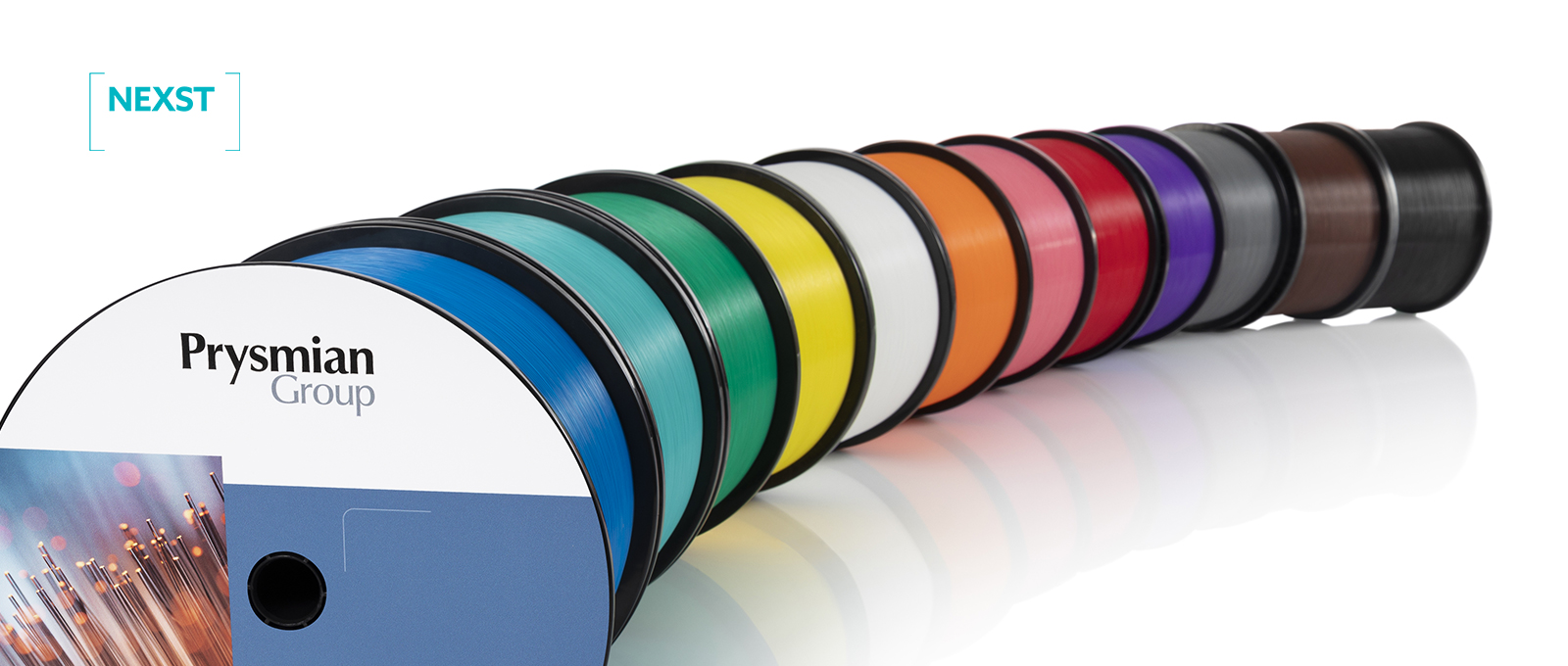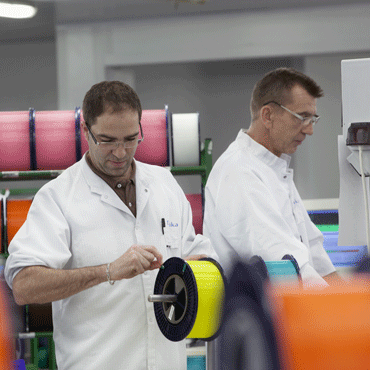A brief history of BendBright®

When an optical fibre cable is bent, light in the outer part of its core is lost, resulting in issues such as signal deterioration. In the early 2000s, ‘bend-insensitive’ single mode fibre was introduced to solve this, followed by multimode fibre. Prysmian was one of the first to successfully develop and market these solutions.
Draka, currently part of the Prysmian Group, first came up with the concept of bend-insensitive fibres. A ring of refractive glass material with a lower index – an ‘optical trench’ – allows for better light confinement, regardless of the condition of the fibre. As a result, fibres can be bent in unprecedented small radii without significant loss. This type of fibre is also very forgiving of any imperfections during installation. Bend-Insensitive cables can be used to make on-premise installations easier, develop microcables, create lightweight high fibre count cables for the outside plant, and realize cables with very high fibre counts. Of course, these advanced fibres would have been difficult to market if they couldn’t be used with existing cable types and networks. Draka were quick to realize this and had already been experimenting with Slim Fibre, BendBright’s predecessor, in 2000.
A team of R&D experts from Draka (in Eindhoven, The Netherlands and Marcoussis and Douvrin, France) were the first to foresee that bend insensitivity would be a key feature of future access networks. Piet Matthijsse, now retired from Draka, suggested this bend-insensitivity technical issue:
“I had worked for Dutch telecom incumbent KPN which gave me a great understanding of the issues cable users faced. I had seen there was often no alternative but to bend or twist fibres in large buildings. We had also experimented with adding fibre to the local loop. That provided an opportunity to see which difficulties installers would typically encounter.”
Louis-Anne de Montmorillon , solved the technical challenge:
“I had already been working in fibre design for some years and was able to adapt the trench concept to standard single mode fibres, in order to reduce bend losses by a factor of ~100 without impacting the other characteristics. This allowed for full compliance with the single mode fibre type, which was already installed worldwide in vast quantities.”
In 2005 the first patent related to BendBright technology was filed. This patent specifically mentions a backward compatibility requirement. (see box 2). BendBright was introduced in 2005 as the standard fibre in all Draka Comteq drop cables, followed by BendBright® XS in 2006.
A key challenge involving the R&D teams in Marcoussis and Douvrin was ensuring all relevant standards were met. For example, the mode-field diameter of the fibre had to be large enough not to introduce splice and incoupling losses, and the higher-order modes had to be contained to avoid interference with the fundamental mode and preserve ‘single-modeness’. A unique bend-insensitive fibre with a trench-assisted design was developed, fully in line with ITU-T recommendation G.652.D of standard single mode fibres for compatibility with the installed base. Bending characteristics were made compatible with the newly introduced ITU-T recommendation G.657. Even at fibre radii as low as 7.5mm, fibre lifetime was not a concern.
After successful tests, the new optimized product was presented at the European Conference on Optical Communications, ECOC, in September 2006 and two months later at the 55th International Wire & Cable Symposium. Product and process developments lead to multiple follow-up patents related to further improvements and fine-tuning. Draka was asked critical questions regarding cable durability, but had carried out plenty of tests and could convincingly explain lifetime would not be an issue.
The inventors: “We soon saw that using these bend-insensitive fibres in connectivity products such as ODFs, splice closures and wall boxes meant that less space was needed for components, which is very important in FTTH networks with its high fibre densities. The robustness of the fibre made it possible to save great deal of money on installation and helped avoid rework. The market didn’t take a great deal of convincing. People immediately understood the benefits and sales were excellent right from the start.”

Box 1
Piet Matthijsse graduated in Electrical Engineering at the Eindhoven University of Technology in 1971. After completing his PhD in Fourier Optics at Leuven University he worked on optical fibre and network technology at KPN Research and Philips Optical Fibre where he worked on PCVD fibre production product and process
development.
In 1991 Piet joined KPN Network Development and in 2001, Draka Comteq Optical Fibre.
Louis-Anne de Montmorillon received his engineering diploma from the Institut d'Optique Graduate School in 1993, and a Ph.D. in Physics from the University of Paris-Sud in 1997. Since then, he has been working in the field of optical fibres for communications, first at Alcatel, then at Draka, and now at Prysmian Group in the Fibre R&D department in Douvrin, France. He has been involved in the design, development and deployment of new fibres for FTTx and long-haul applications. Louis-Anne has published over 50 papers and has been granted more than 50 patents.
Box 2
From the BendBright patent application:
“There is (…) a need for a transmission fibre with which it is possible to meet the criteria of the G.652 standard, i.e. which can be given commercial use in transmission systems of the FTTH or FTTC type, and which shows both reduced bending losses and reduced micro bending losses. In FTTH or FTTC applications, fibres are subjected to higher bending and micro bending stresses than in long-haul transmission applications. Indeed, in FTTH or FTTC applications, overlengths of fibres are generally wound in increasingly miniaturized storage boxes; moreover the fibre will be subject to significant bending stresses related to the environment of its installation.”








